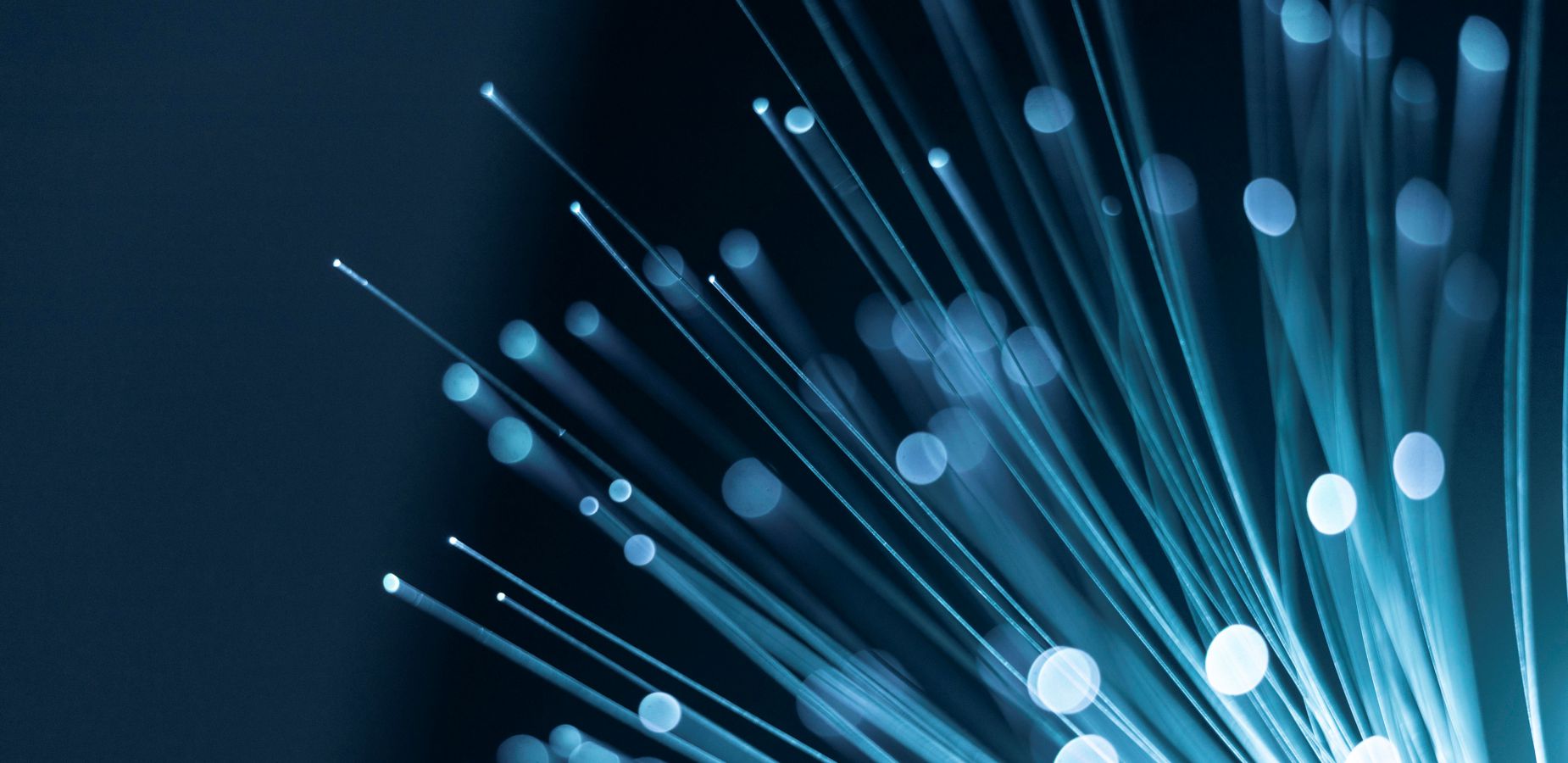Introduction
Information and communication technologies such as 5G and optical fiber play an increasingly important role in supporting current socio-economic activities and people’s lives. In recent years, the global epidemic of the Covid-19 that started in 2020 has completely changed the lives we have taken for granted. Due to infection prevention measures, the movement of people and face-to-face contact with others have decreased significantly. The use of services such as telework, online conferencing systems, home learning, and telemedicine using advanced information and communication technology has rapidly become widespread.
In order to use these services smoothly, it is essential to have optical fiber in place to support stable communications. So far, the Ministry of Internal Affairs and Communications has promoted measures related to the laying of optical fiber throughout Japan based on the ICT infrastructure regional development master plan 3.0, etc., and then as of the end of March 2022, Japan’s optical fiber installation status has reached 99.7% in terms of household coverage rate. In this article, I would like to introduce the policies and current efforts related to the laying of optical fiber in Japan, and discuss the future prospects.
Regarding Measures related to Optical Fiber Facilities
This section explains the main subsidy measures that provide incentives for installing optical fiber.
- Regarding Past Measures, etc.
- Information and Communications Policy toward the 2020s – Toward Further Spread and Development of the World’s Top-Level Information and Communications Infrastructure – (December 2014 Report of the Information and Communications Council)
In December 2014, the Information and Communications Council report set out the direction of policy regarding the installation of optical fiber. The outline is shown as follows.
- Outline
The development of ICT infrastructure in underserved areas should be promoted to contribute to the resolution of social issues such as medical care and education, as well as to regional development, while fully taking into account the situation of settlements due to future population decline and population flow, and the different needs of each region.
In addition, as for ultrahigh-speed broadband, since unimproved areas are mostly unprofitable, it is necessary to continue to support the public development of ultrahigh-speed broadband through the use of subsidies, etc., while basing the infrastructure development on private operators. In particular, optical fiber is used as an entrance line for cellular phones, and can also be an important means of contributing to solving various social issues such as medical care and education, as well as to regional development. On the other hand, the needs for optical fiber in underserved areas are changing due to the expansion of mobile super-high-speed broadband service areas. Therefore, it is appropriate to examine how support for optical fiber installation should be provided, while accurately grasping the needs in such areas and verifying the current support measures.
- Information and Communication Infrastructure Development Promotion Project (FY2016-FY2018)
The Information and Telecommunications Infrastructure Development Promotion Project was established in response to the Information and Telecommunications Policy for the 2020s – Toward Further Dissemination and Development of a World-Class Information and Telecommunications Infrastructure (December 2014 Report of the Information and Telecommunications Council). The outline of the project is as follows.
- Outline
In order to promote the development of super high-speed broadband infrastructure, which is important and indispensable for regional revitalization, local governments with “disadvantaged areas” (depopulated areas, remote areas, islands, peninsulas, mountain villages, specific farming and mountain villages, and areas with heavy snowfall), such as remote islands, will be subsidized for a part of their project costs when they develop super high-speed broadband infrastructure such as optical fiber.
- Basic Concept of Policy
In light of the above background, the Information and Telecommunications Infrastructure Development Promotion Project was established to further promote the development of infrastructure related to ultrahigh-speed broadband.
In order to develop super-high-speed broadband infrastructure, this project supports the development of information and telecommunications infrastructure that can serve as a means of resolving issues faced by local communities. This enables local governments, etc. to develop infrastructures according to the characteristics of each region.

Figure 1: Information and Communication Infrastructure Development and Promotion Project
- Current Measures and Future Efforts
- The Project on Promoting Advanced Radio Environment Improvement (FY2019-)
- Outline
In disadvantaged areas, this program supports local governments and telecommunications carriers in the development of transmission line facilities, etc., which are the prerequisites for high-speed, large-capacity wireless communications. Specifically, the program subsidizes a portion of the cost of installing optical fiber up to the entrance of the wireless station. In addition, the program subsidizes a portion of the cost of maintenance and management of optical fibers in remote island areas conducted by local public entities.
The subsidies are provided for a portion of the expenses required for the maintenance and management of optical fibers in remote island areas by local public entities.
- Basic Concept of Policies
The use of IoT services based on advanced wireless systems is expanding in fields such as agriculture, tourism, disaster prevention, and medical/nursing care in order to solve regional issues and revitalize communities, and this is accompanied by a rapid increase in communication traffic. To meet these rapidly growing needs, it is necessary to promote the use of a variety of wireless stations, such as Wi-Fi, etc., to meet these rapidly growing needs.
In order to realize an advanced wireless environment such as 5G and IoT, the government will subsidize a part of the cost for telecommunications carriers, etc. to develop transmission line facilities and associated station facilities, which are the prerequisites for wireless stations, in geographically disadvantaged areas, in order to achieve effective use of radio waves and to revitalize the areas. The government will subsidize a portion of the cost of the maintenance of transmission lines and associated station facilities.
Starting in FY2020, the government will also subsidize private telecommunications carriers that receive publicly installed facilities and upgrade them to be compatible with 5G and other advanced technologies. (Renewals that do not involve upgrading or upgrading of public facilities are not eligible for the subsidy.)

Figure 2: The Project on Promoting Advanced Radio Environment Improvement
Infrastructure Development Plan for a Digital Garden City Nation
(Formulated March, 2022, Revised in April, 2023)
The Japanese government aims to realize a “New Form of Capitalism” based on a virtuous cycle of post-Corona growth and distribution, and has identified the Vision for a Digital Garden City Nation as the most important pillar of its growth strategy to achieve this goal. In light of the fact that there is a need to utilize new digital technologies in rural areas, which face social challenges such as aging and depopulation, this initiative aims to achieve bottom-up growth from the rural areas to the national level by revitalizing the rural areas and creating a sustainable economic society, while taking advantage of local individuality. Since the development of digital infrastructure such as optical fiber, 5G, and data centers/submarine cables is an essential prerequisite for the realization of this vision, the “Infrastructure Development Plan for a Digital Garden City Nation” was formulated in March 2022 and revised in April 2023, incorporating items to be addressed by the MIC. In this plan, the current status and development targets for optical fiber installation are described as follows, and the Japanese government will steadily promote efforts to achieve the target, while also utilizing the aforementioned advanced wireless environment improvement promotion project.
- Current Situations and Challenges
The optical fiber for residential service reached 99.72% household coverage (about 160,000 households not yet covered) at the end of FY2021, and is expected to reach 99.80% (about 120,000 households not yet covered) by the end of FY2022, making steady progress toward achieving the target of 99.90% household coverage by the end of FY2027. The coverage rate is steadily increasing toward the goal of 99.90% by the end of FY2027. However, there are many remote islands that have not yet been served due to the significant cost required to install and maintain submarine cables to and from the mainland in addition to the optical fiber within the islands.
- Maintenance Policy
With regard to the elimination of underdeveloped areas, we will continue to promote development in disadvantaged areas to narrow the gap in development status between regions, aiming to achieve a national household coverage rate of 99.85% (about 90,000 underdeveloped households) by the end of FY2024 and 99.90% (about 50,000 underdeveloped households) by the end of FY2027. The project will continue to promote the development of an advanced wireless environment. Continue to promote the development of advanced wireless environment in remote islands and other disadvantaged areas through The Project on Promoting Advanced Radio Environment Improvement.
Conclusion
This paper outlines the policies and current efforts related to the installation of optical fiber in Japan to date. The Ministry of Internal Affairs and Communications (MIC), in cooperation with local governments, telecommunications carriers, and other related parties, will continue to further promote optical fiber installation to achieve the 99.90% household coverage target set in the “Infrastructure Development Plan for a Digital Garden City Nation” (revised version), taking into account the needs of local communities. We will also keep on tackling the realization of the Vision for a Digital Garden City Nation.

